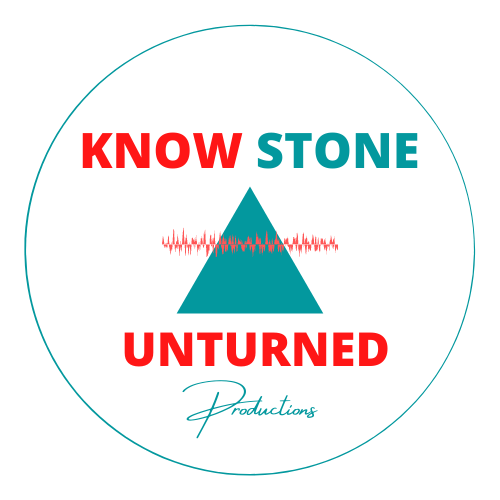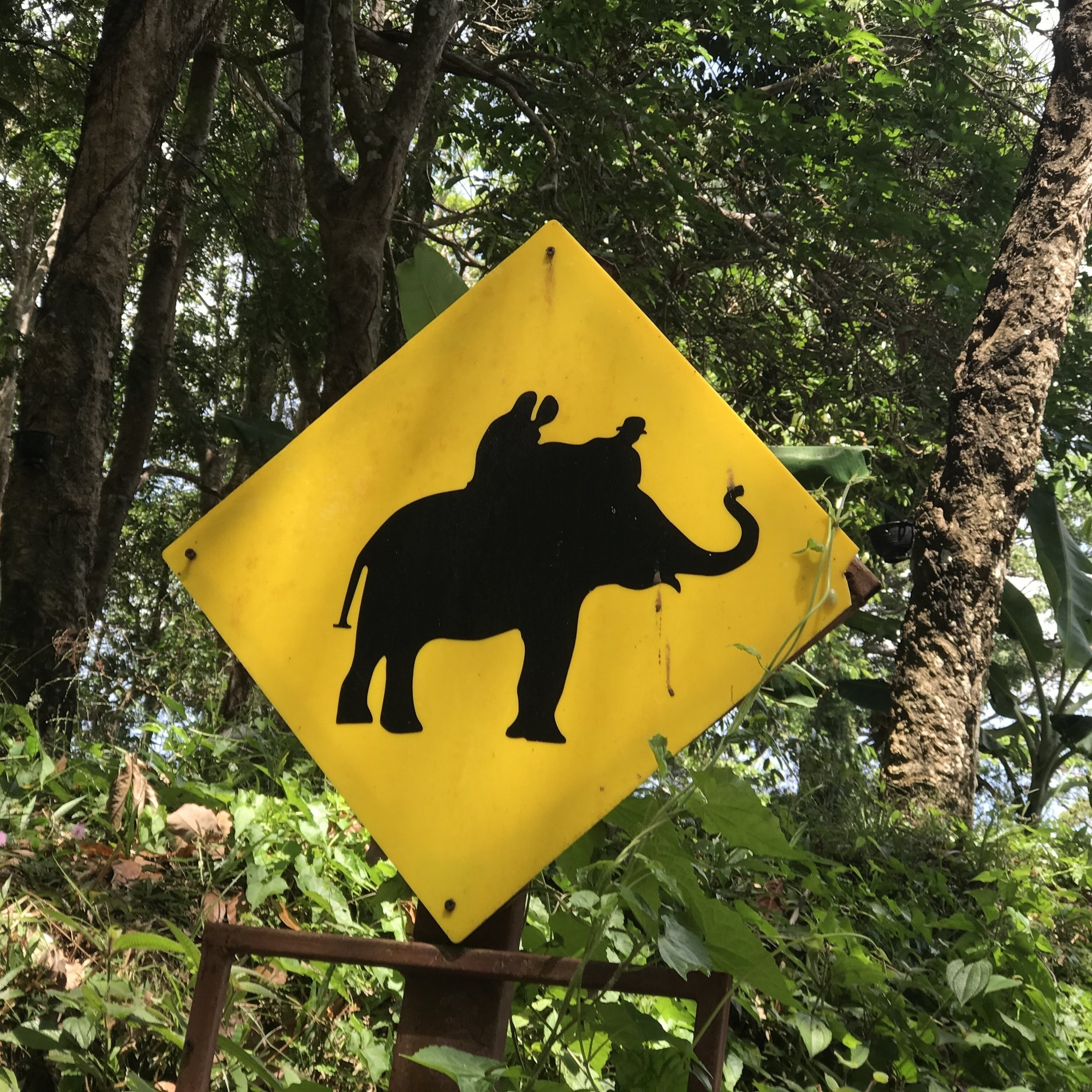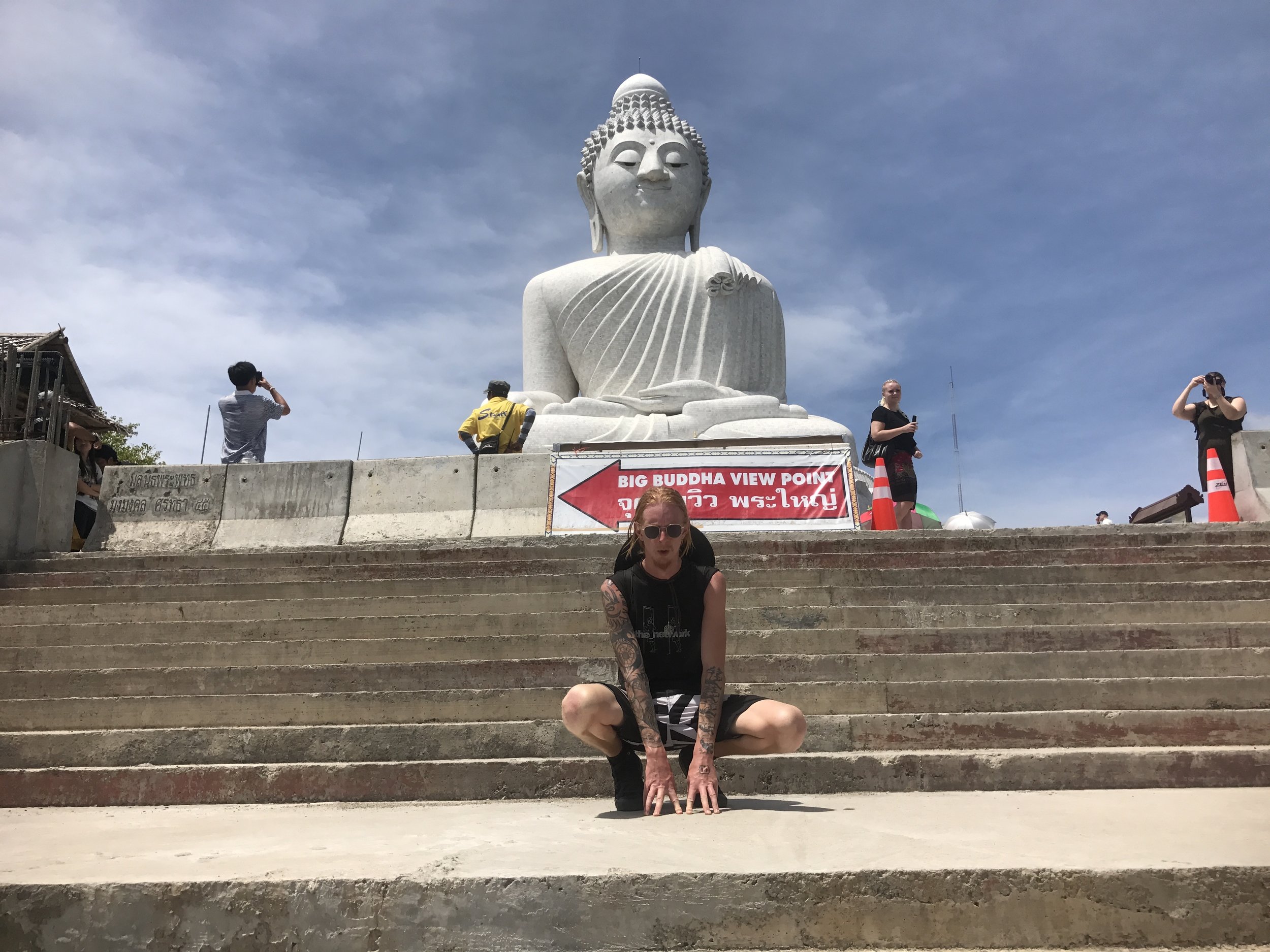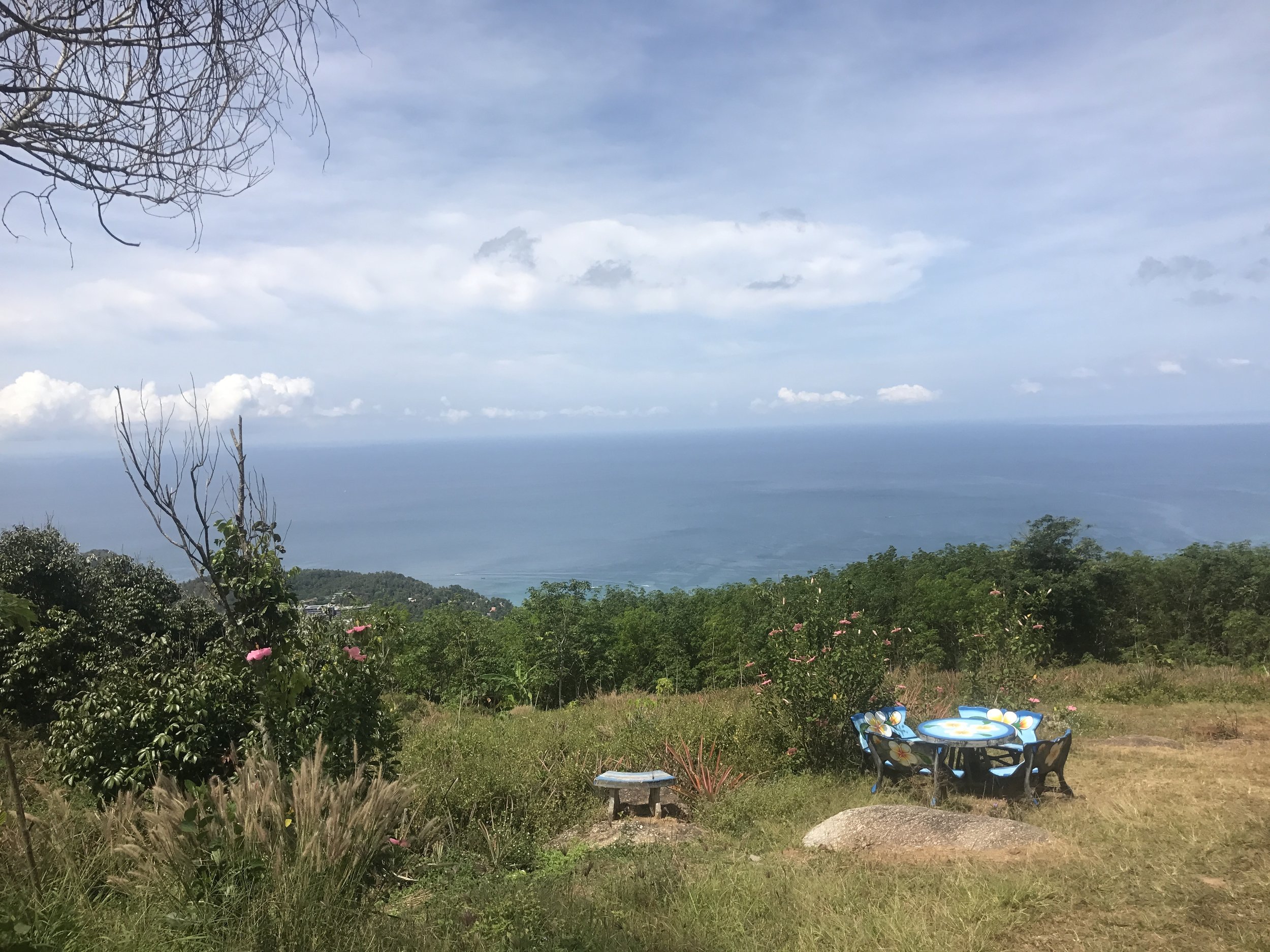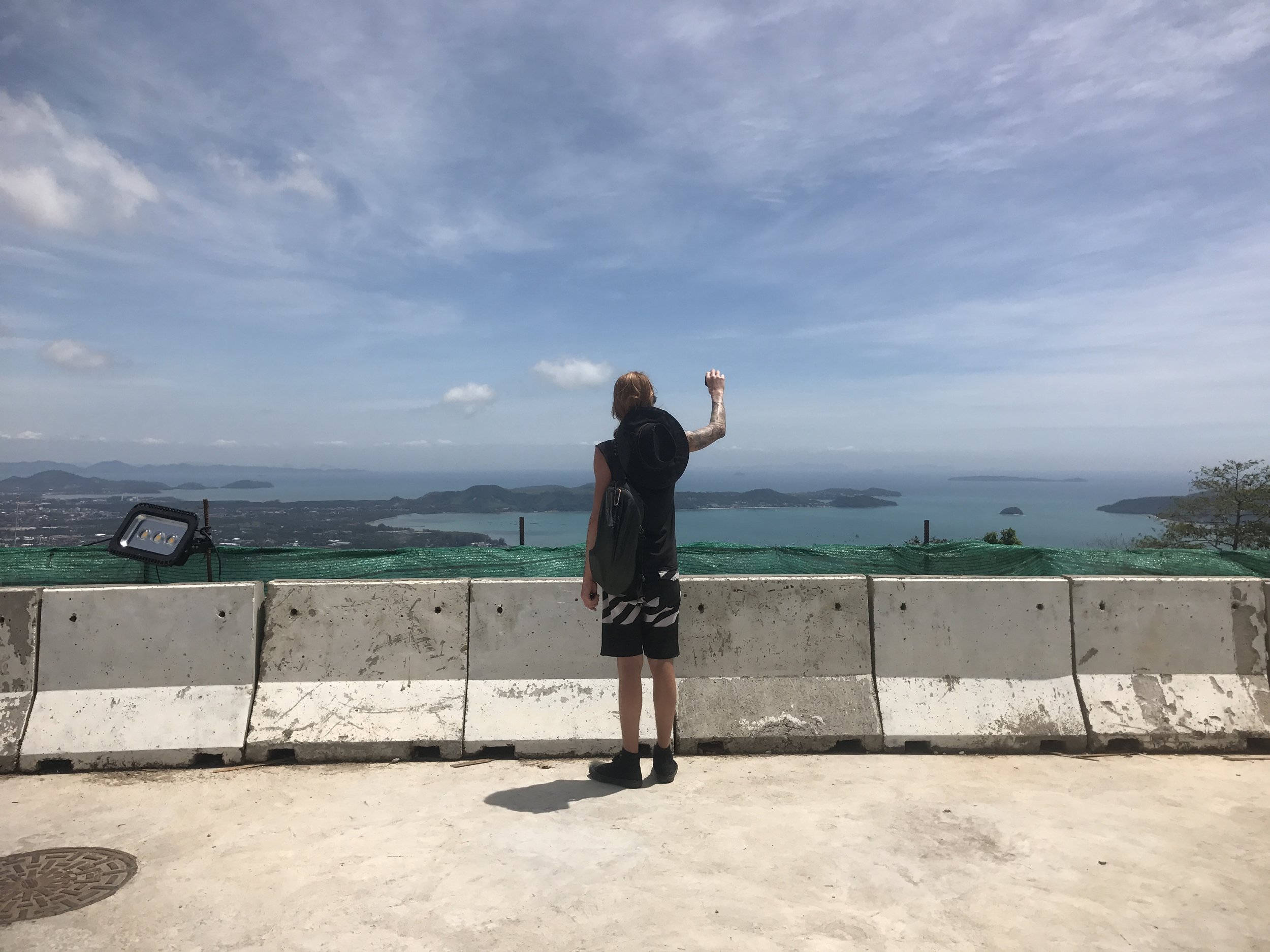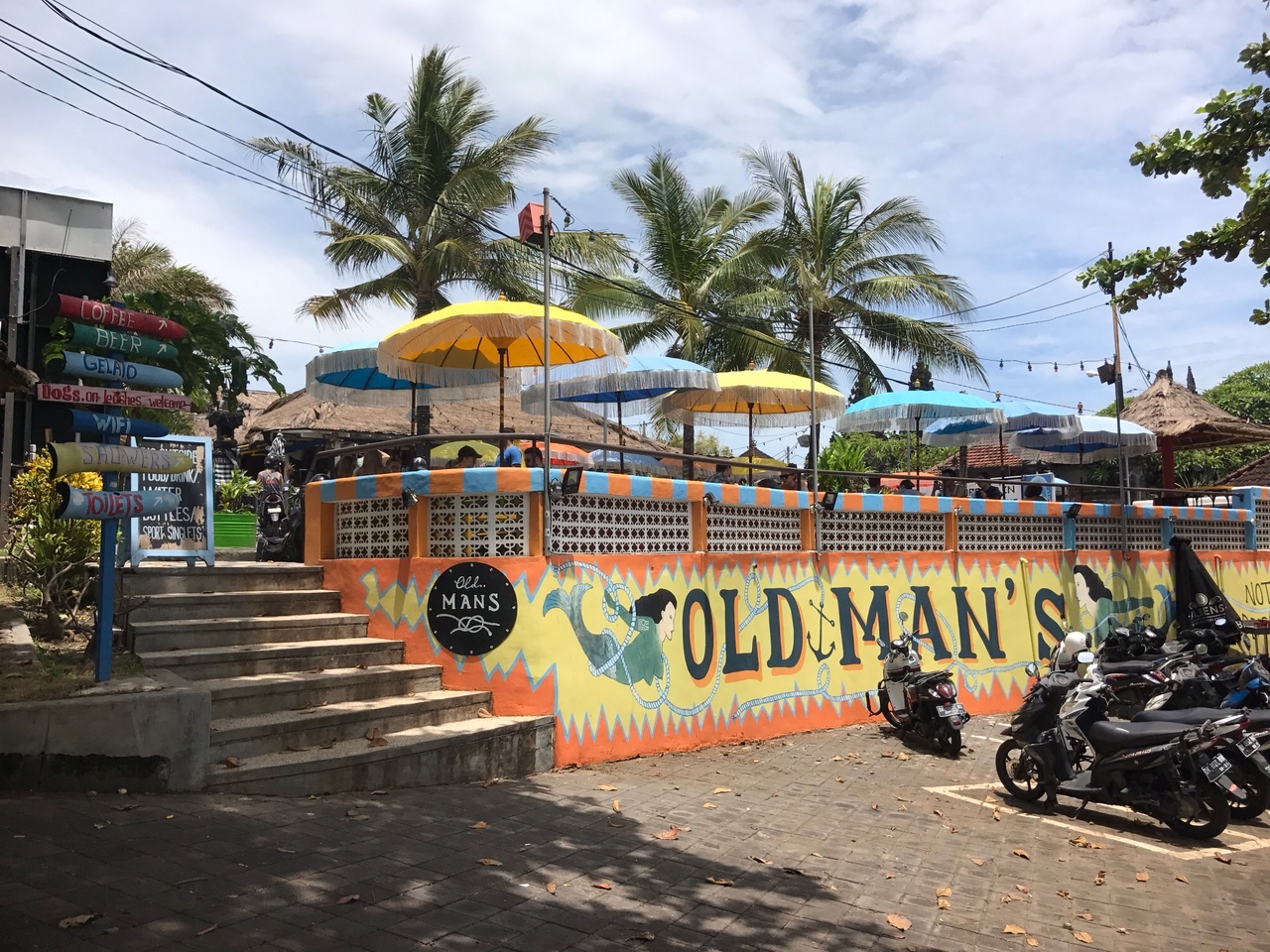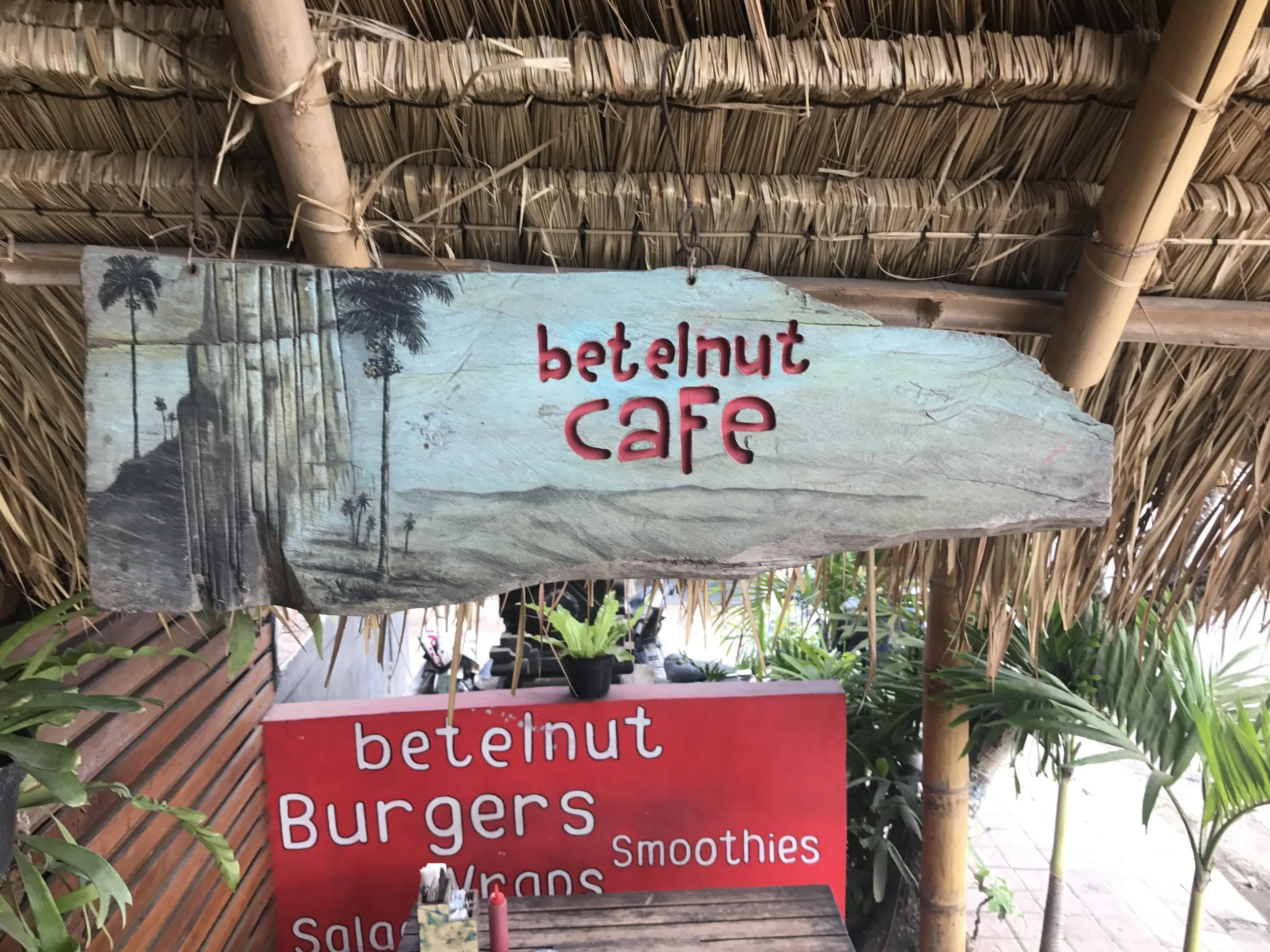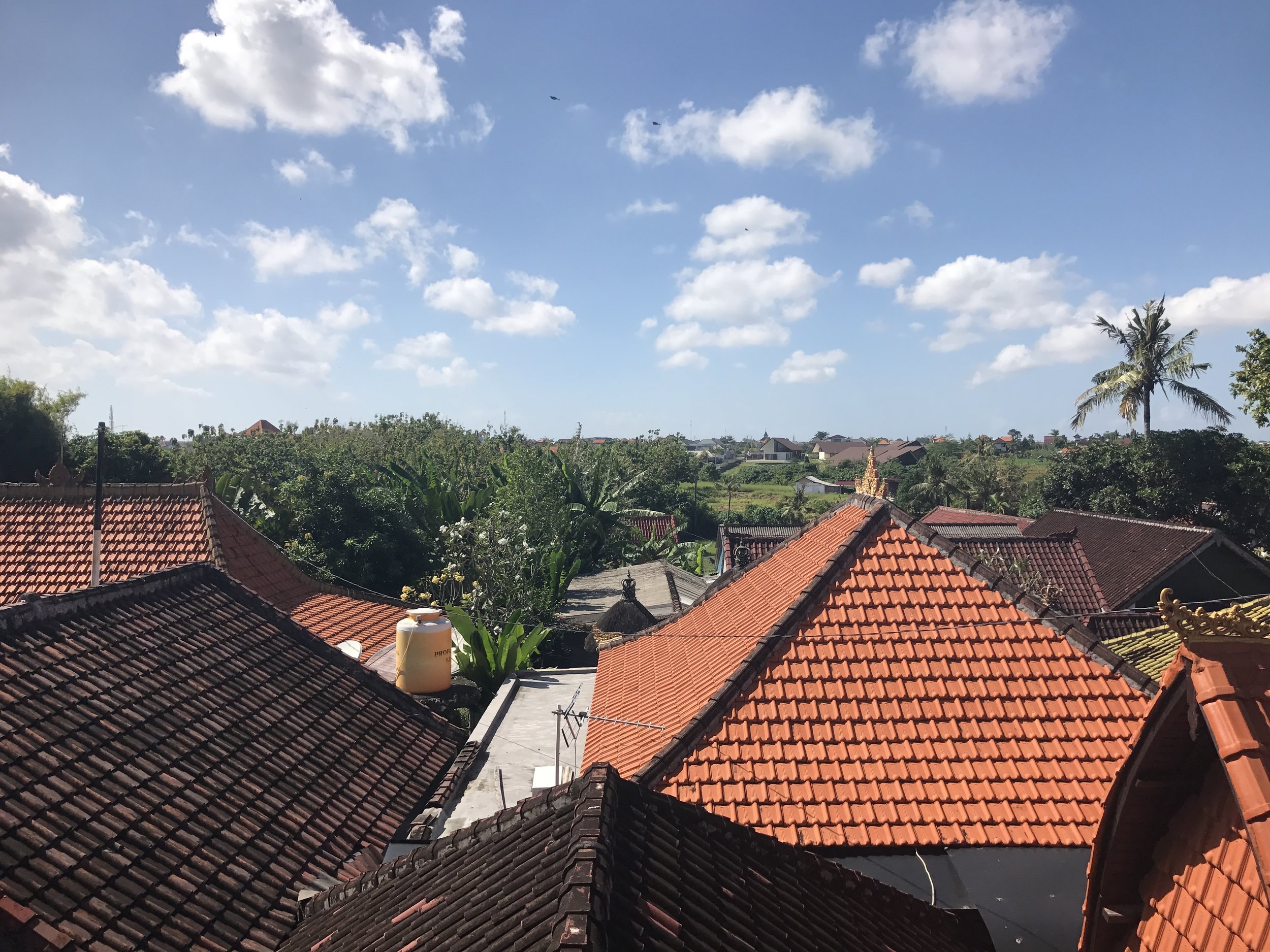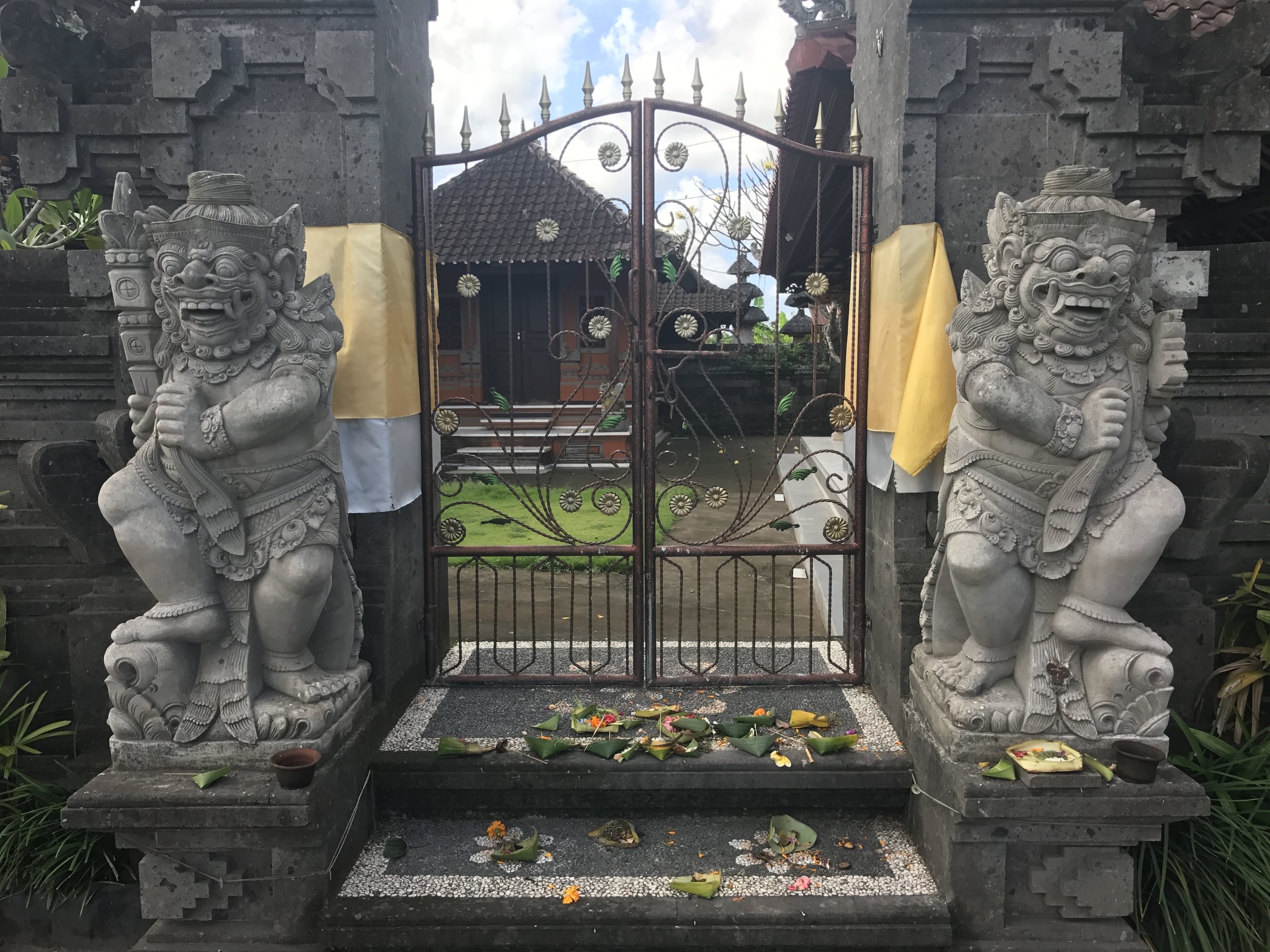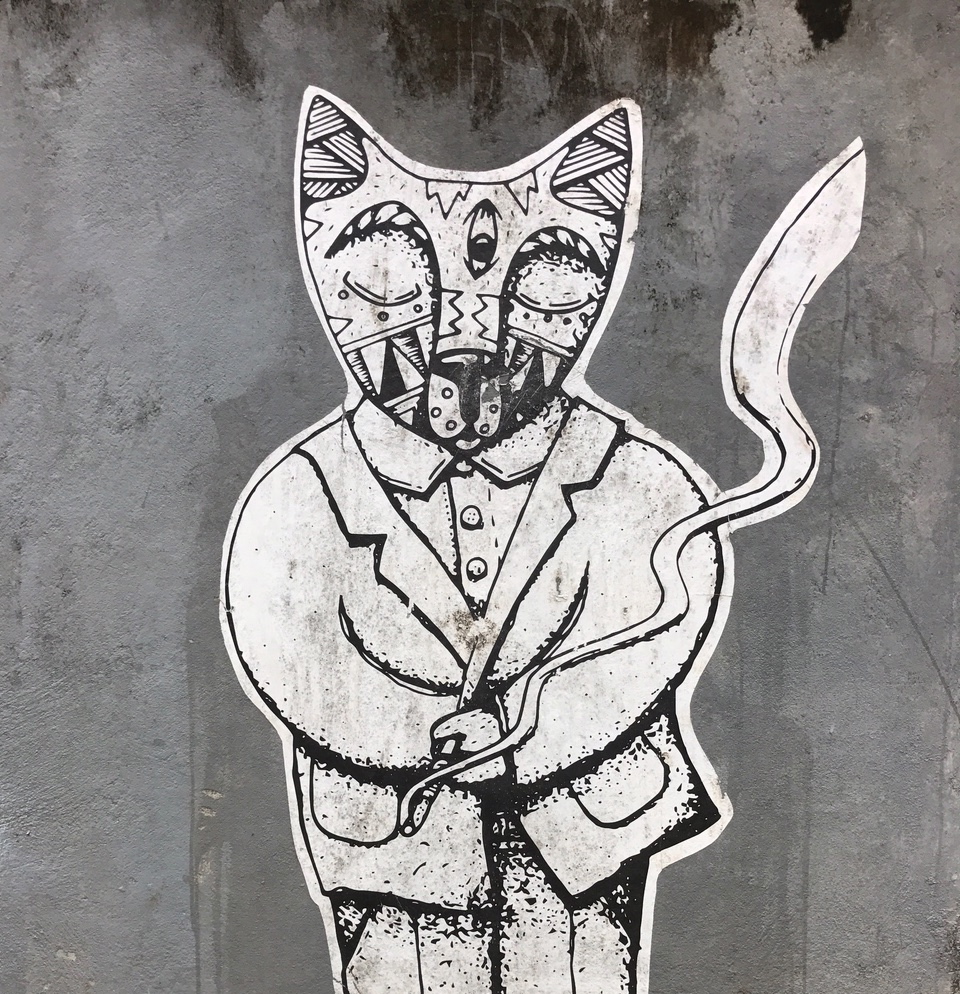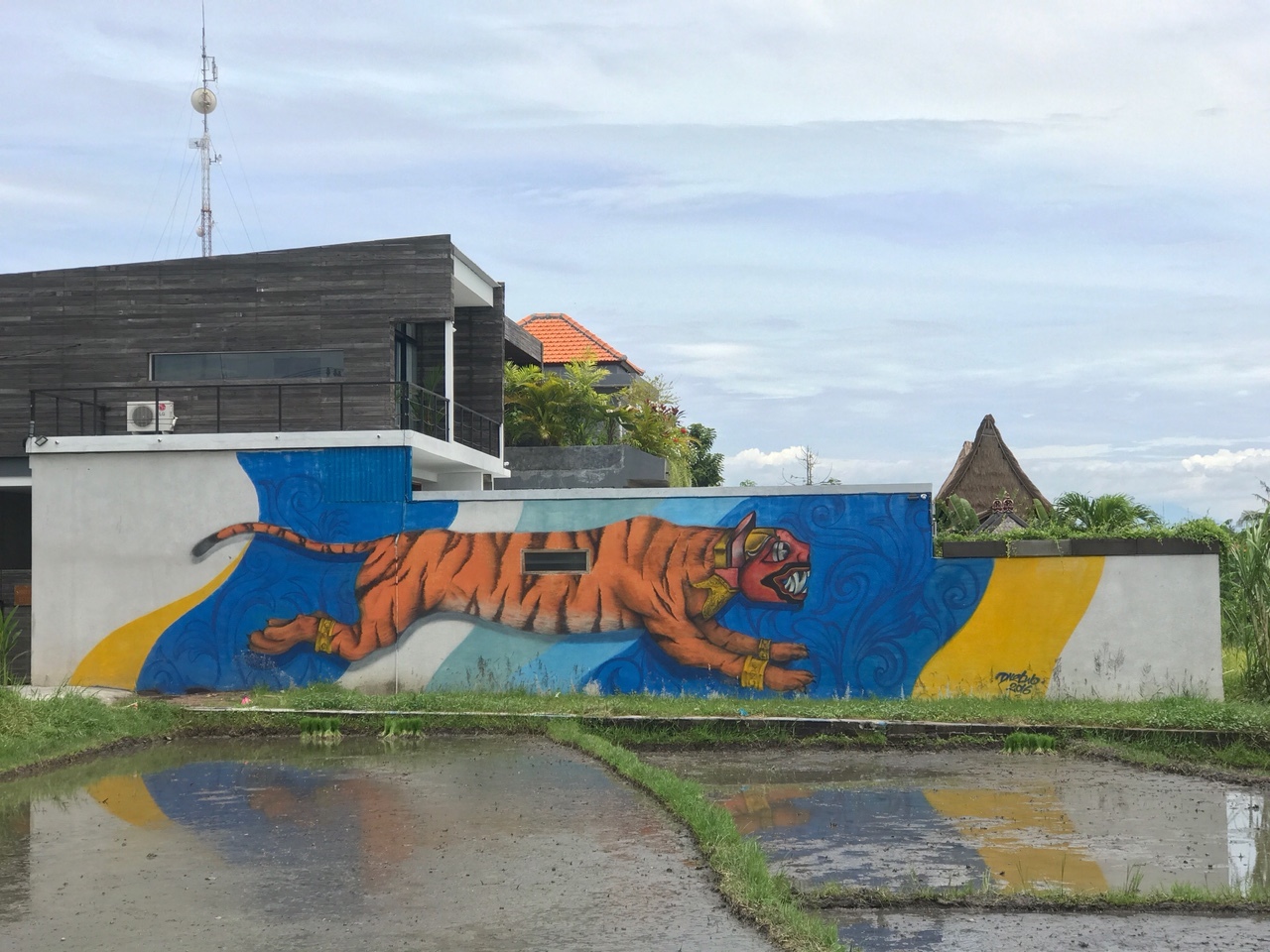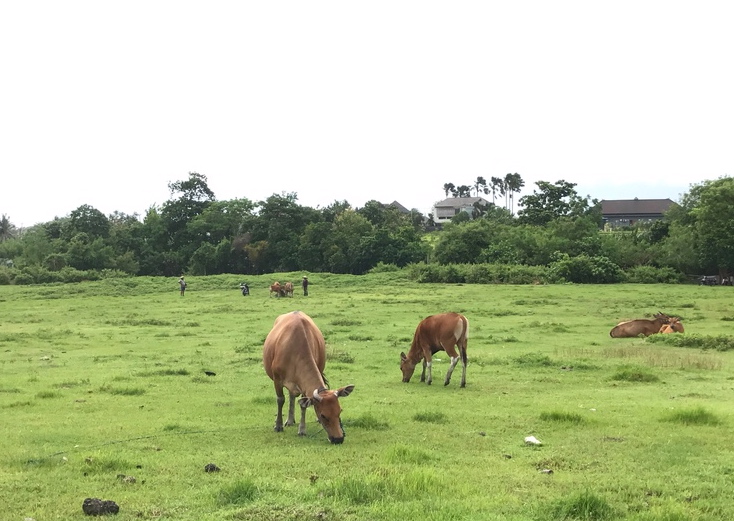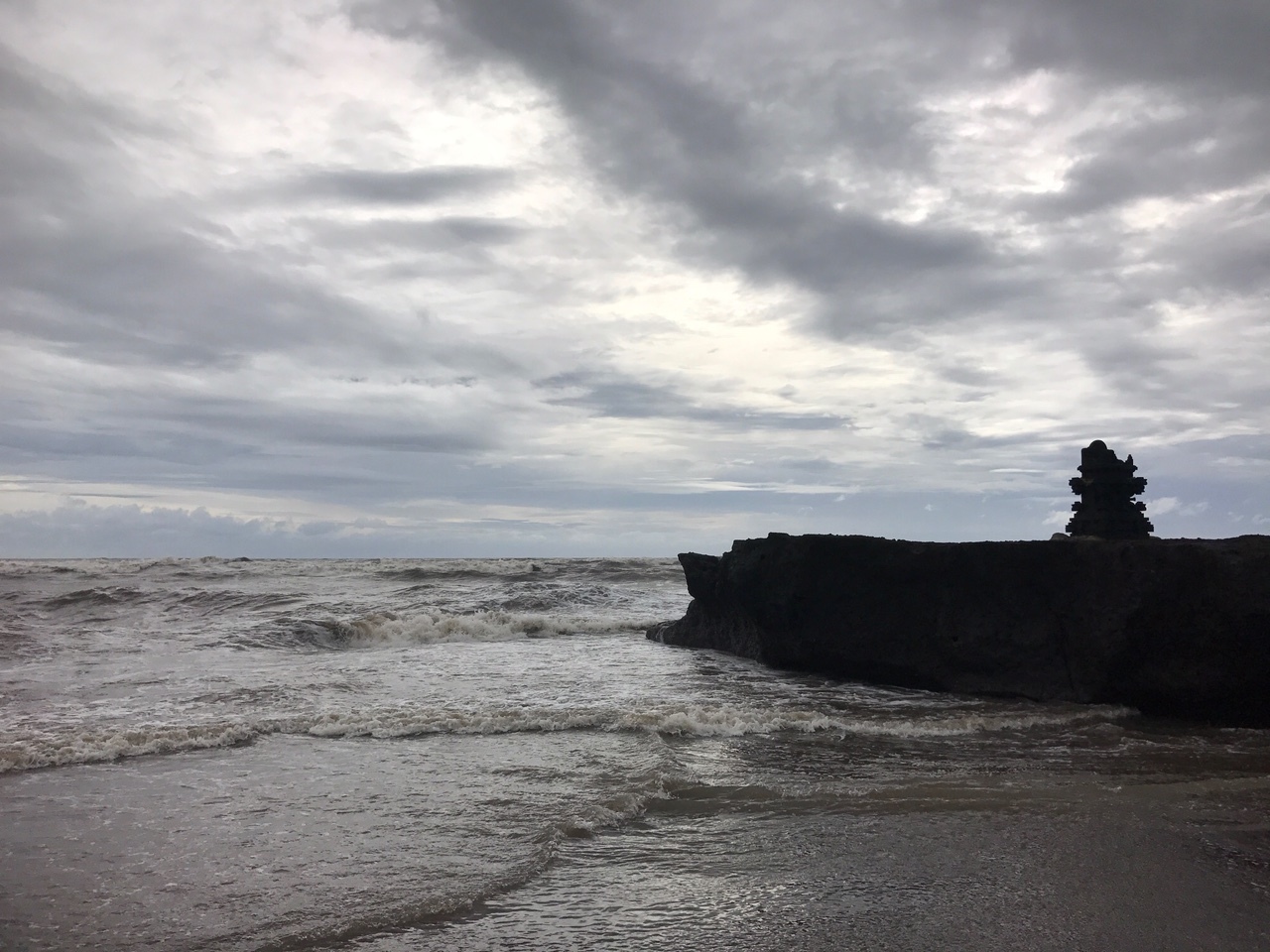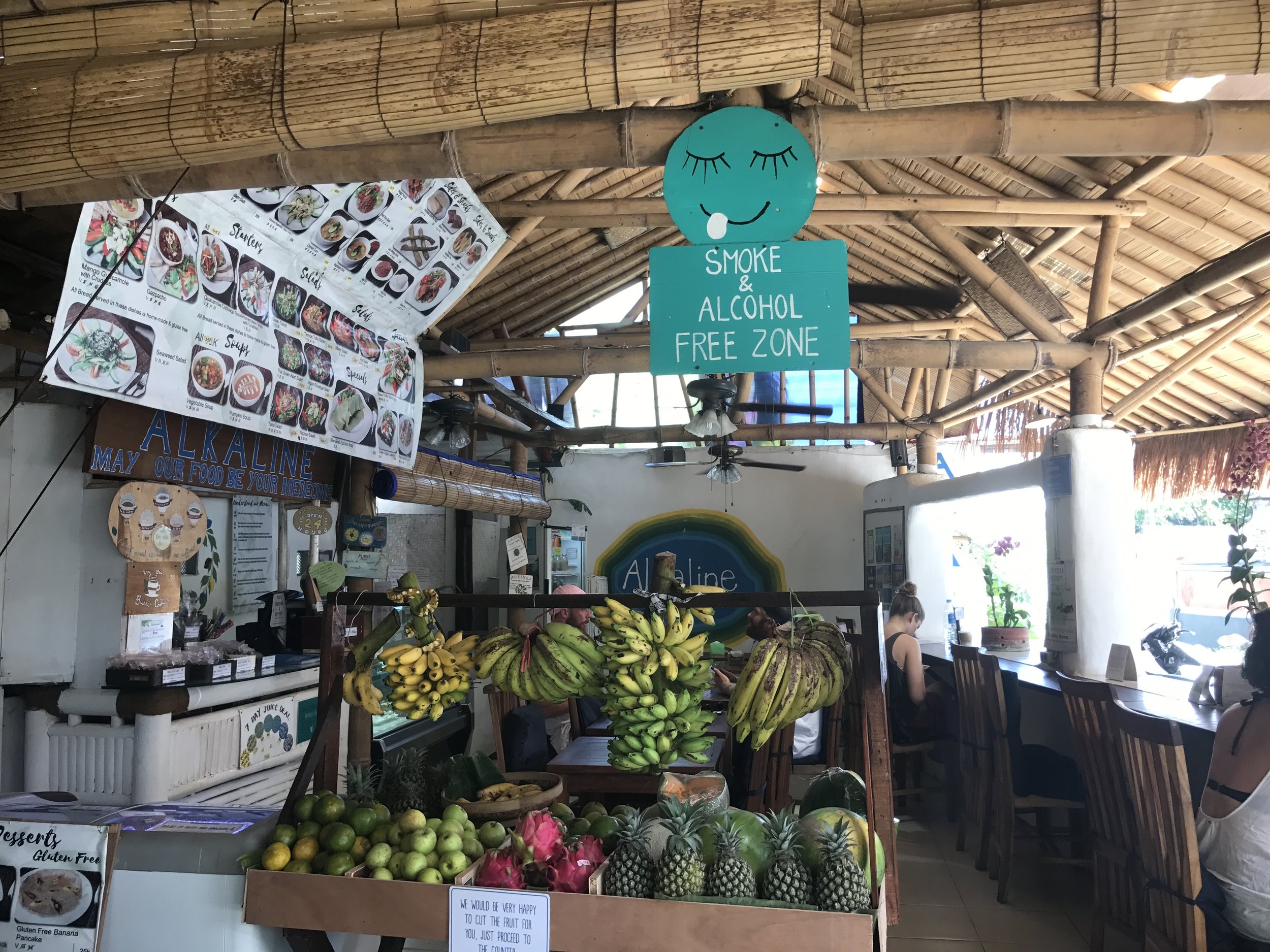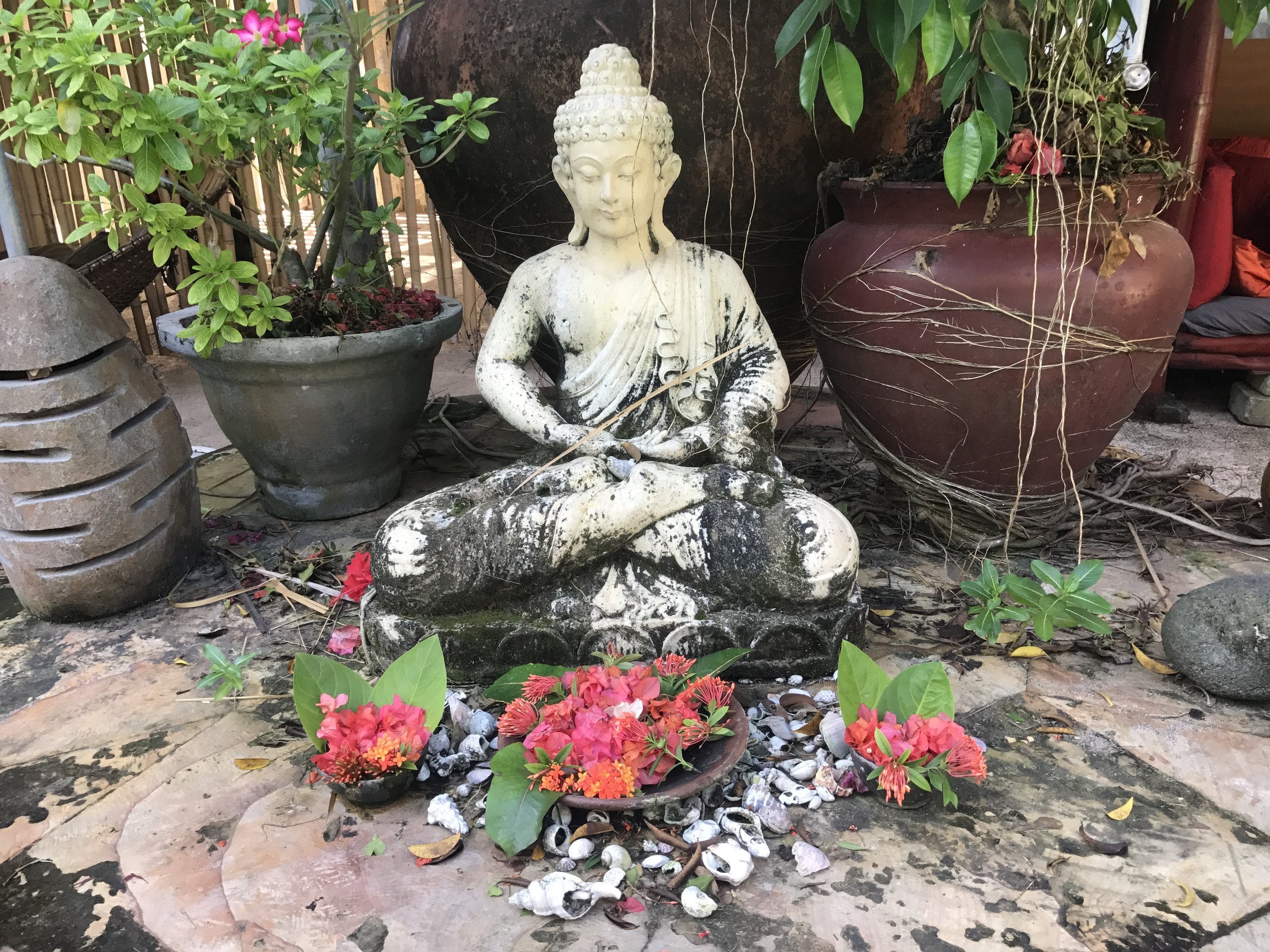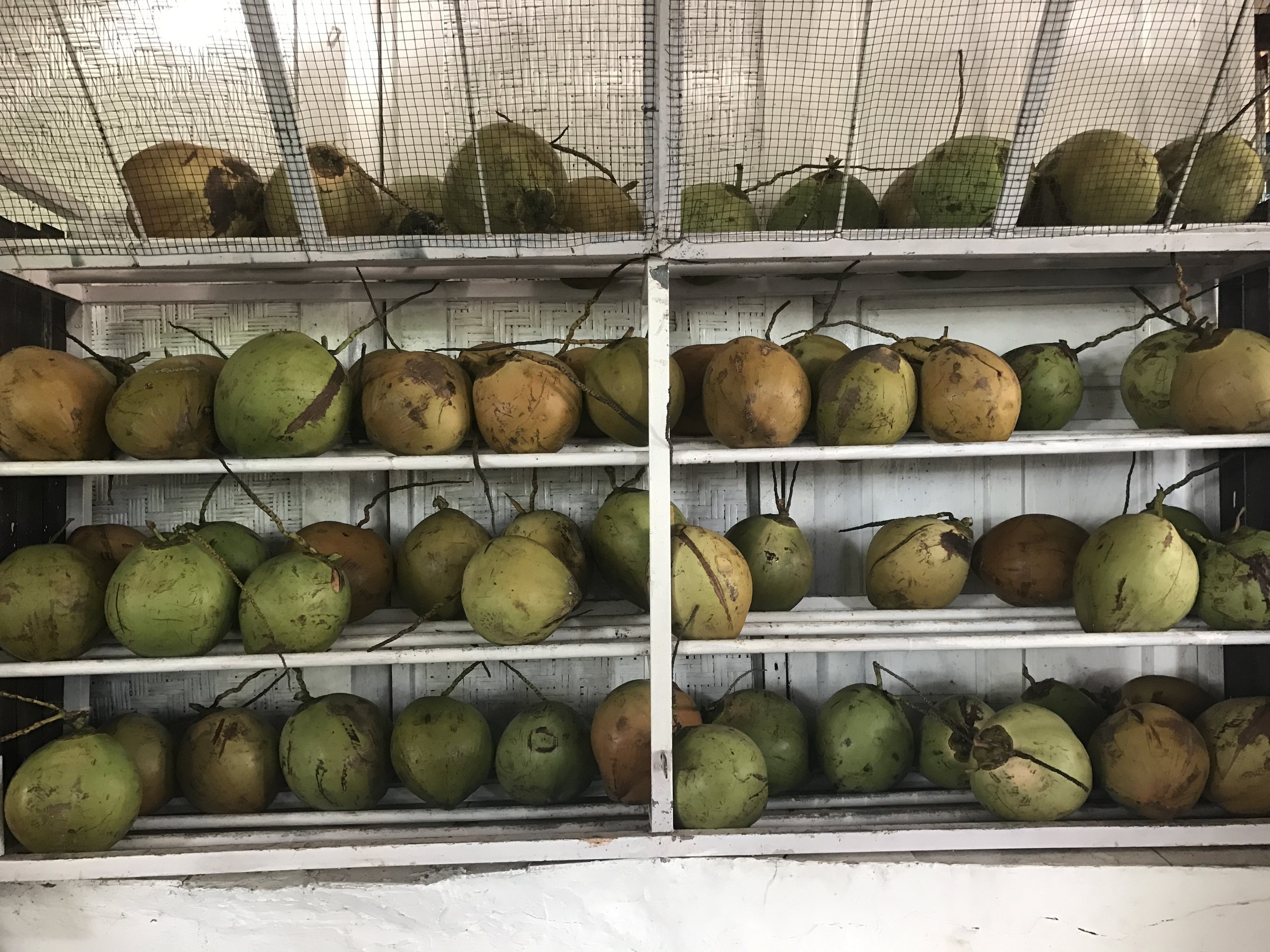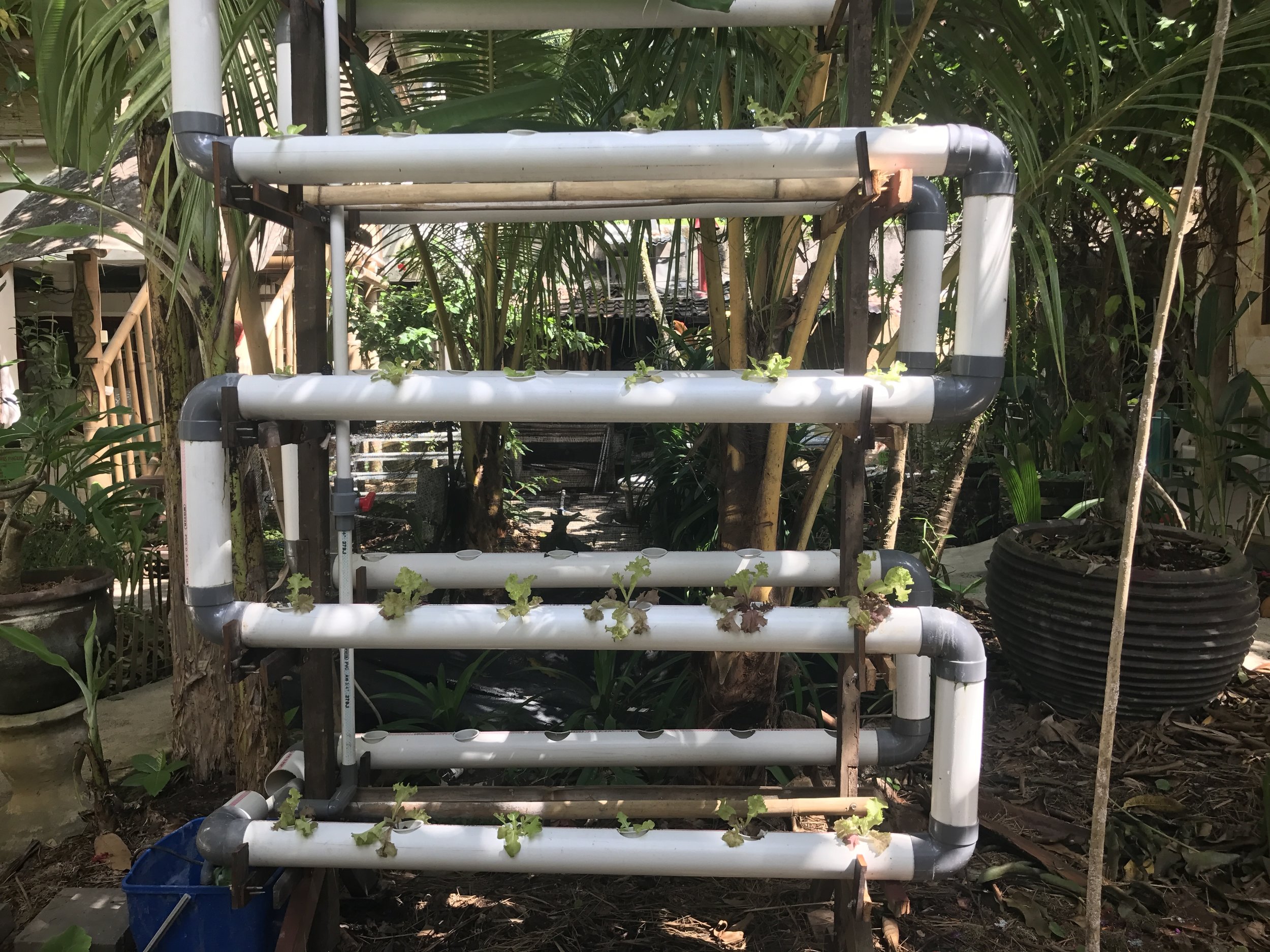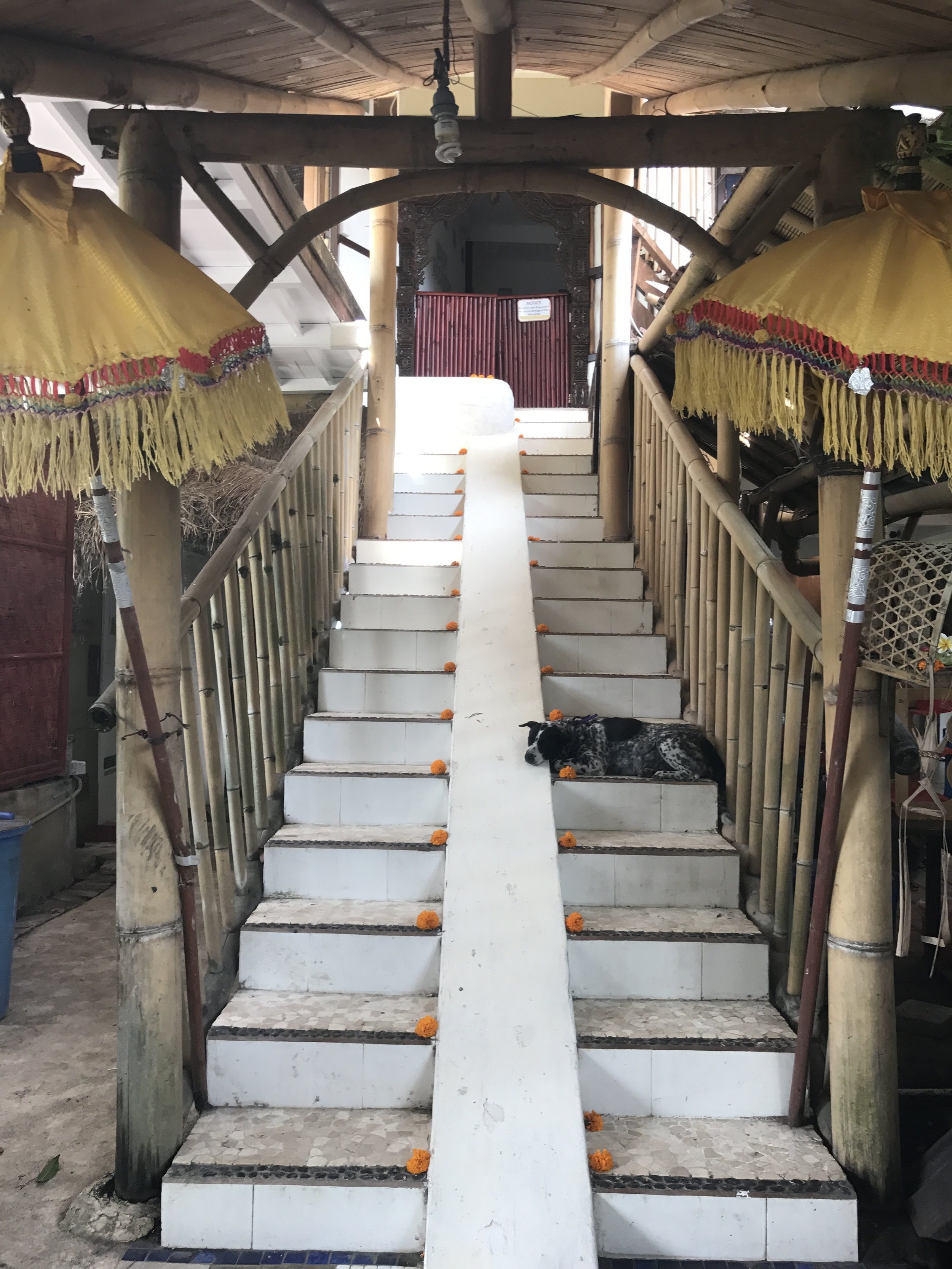It was our first morning on the island when we noticed Big Buddha serenely overlooking the landscape. Gazing out our hotel window sipping instant coffee and taking in the palm covered hillside decorated with villas, restaurants, shops and a turquoise slice of Kata Beach’s half moon cove, we looked up at the behemoth Buddha while listening to the morning breeze that carried sounds of chirping birds, vehicles cruising the active roadside, and the mix of languages being spoken in the hotel lounge.
When looking into the area, Big Buddha hadn’t appeared in our research. Intrigued, we wanted to know more, and agreed to make an adventure out of hiking to the monument and scenic viewpoint.
Big Buddha's silhouette.
The bells to the right each dangle a heart inscribed with prayers in many tongues left by visitors.
A quick visit to the website offered some basic information and a brief history.
Entry is free and the site is open everyday from 6AM – 7PM.
Though construction began as early as 2006 the project was still in the finishing stages (as of our visit in 2017). Despite visible construction materials, the site offers outstanding panorama views from every angle, featuring, of course, a stunning 45-meter marble and jade Buddha seated atop the peak of Mount Nagakerd.
The back entrance to Big Buddha's interior.
A smaller 12-meter high glimmering gold Buddha serves as a replica for the larger statue and can be found beside its big brother. A path through the bottom of Big Buddha allows visitors to walk through and take a look inside.
At the base of the site is a traditional temple where monks can be found partaking in daily rituals and interacting with visitors. Being an active religious site, it’s good to know that guests, especially ladies, are expected to cover up shoulders and legs.
We had scarves that served this purpose, but shawls are provided and available for sale on site if needed at one of the plethora of shops offering souvenirs to take home with you.
Have a look at our video below for a walk through of Big Buddha.
If you'd like to know where we stayed in Phuket, learn about our adventurous hike, and peruse our gallery of snapshots (at the end of this article), please read on.
GETTING THERE
Relaxing on Kata Beach.
The drive from Phuket International Airport in a shared van with 15 other travelers to our hotel took about two hours stopping intermittently at each passenger’s accommodations. While this isn’t the fastest or most luxurious way to travel, it only cost about $6 per person, which makes it all worth it when you’re on a budget.
WHERE WE STAYED
While planning our trip to Asia we had always envisioned visiting Phuket, Thailand’s famed tropical resort laden island, a bridge away from the mainland, and a jump off to the country’s myriad of dreamy emerald islands, each with their own charm.
This was the second stop on our six-month journey overseas following a month in Bali, Indonesia. After pouring over reviews of Phuket’s beaches and hotels, we decided on Kata Beach on the southwest side of the Island. We arrived in February during the dry season and enjoyed remarkably flat teal waters. Generally speaking, Thailand doesn't have a lot of surf. Despite that, Kata Beach does have some of the surf culture we were looking for in a place to stay.
On a backpacker’s budget, we admittedly struggled to find a hotel with the amenities we wanted within our price range. That is, until we found Boondaree Home Resort through AirBNB, tucked away from the tourist center offering both ocean and mountain views.
For about $20 a night we enjoyed a private room with en suite bathroom, a pleasant view, free and reliable Wi-Fi, free coffee, a fridge, a tiny pool, and a quiet place to get work done within walking distance to town. While the hotel is on a very busy street, it's less than a thirty minute walk through sleepy back roads to the beach, and 10 minutes walking distance to nearby restaurants. The staff at Boondaree was super friendly and helpful, too. (A note of reference: all the hotels we looked at with similar amenities near any beach were at least double the price per night.)
OUR TREK
Let's Go!
While it seems most drive to Big Buddha we decided to hike for adventure and exercise.
We didn't have cell service at the time, and identified our route using Google Maps (the screenshots below were the road maps that guided us). Others who’d made the journey recommended leaving early to avoid walking during the hottest part of the day, but not being the earliest of risers we left at about 10AM. Hindsight is 20/20 and we can see now we would have been more comfortable if we heeded the advice.
It's important to know that Phuket is a developed city experiencing increasing growth, more so than we expected. Our hotel was on a steep and busy road not well suited for pedestrians. No sidewalks, just a little slice of asphalt on either side of the street littered with trash and broken glass.
Sunscreened, donning sun hats, sun glasses, sneakers, and carrying back packs filled with water and scarves, we started out on our hike. Motorists honked as they passed, some hoping we'd hire them for a ride, others simply alerting us to their presence. But once set out on our pilgrimage, we were determined to complete it.
The day grew hot fast as we walked the twisting highway that crossed the island from east to west. In a particularly narrow section passing a cliff side, we walked along a cement guardrail, enjoying the view of the other side of Phuket
The view from Mount Nagakerd.
After about forty minutes of trekking when the road started to dip downhill we began to wonder whether we were lost, and turned into a hotel restaurant to use the Internet and take a break from the heat. While sitting at the covered outdoor café, we watched a cat try to catch a stork (the stork prevailed), and consulted our map over watermelon juice and spring rolls.
At the end of the hotel’s driveway was a security shack that guarded a small road leading up the mountain. All signs pointed that we were to go that way. So we did.
The quiet street lined with fancy villas felt like a scenic road compared to the bustling highway, and soon, the asphalt met with a dirt path heading straight into the jungle. Now, this was the “hike to Big Buddha” we had in mind!
We forged ahead through a narrow trail along a steep cliff overlooking the east side of Phuket and Phang Nga Bay peaked with forested islands. Built into the hills, we passed both small shelters made of tin and boards, and abandoned half-built luxury homes. Orange and purple butterflies danced around us avoiding florescent black and yellow orb spiders perched in intricate webs.
We anticipated passing an elephant camp along the way, but were nonetheless arrested by the sight of a beautiful Asian Elephant walking toward us on the path, her mahout (trainer) on her head and tourist on her back. This was our first encounter with an elephant in our travels, and we found ourselves taken aback by both her majesty and plight. We stopped and waited, watching the elephant suck water from a small puddle on the side of the road and spray it under her belly to cool off. We continued on, passing two more elephants on a tourist trek, one with all of her four legs bound in chains.
Exiting the short and quiet forested segment of our walk, we came to an intersection with a winding road going straight up and down the mountain. To either side were outposts featuring young elephants. One juvenile that was harnessed to the ground by a chain on the side of the road paced and pulled at its fastened leg, only ceasing when tourists gave him a banana. In the opposite direction heading toward Big Buddha a baby elephant paced in a pen. We were offered to feed the baby, but declined.
*The cruelty inflicted on endangered Asian Elephant’s by the elephant tourism industry is well documented, and as such we do not condone elephant riding whatsoever. This is a complex issue, and in many cases both elephants and people are forced into bad situations that cause pain for both parties. If you want to interact with elephants in Phuket, please consider giving the power of your dollar to an elephant sanctuary like Elephant Nature Park's project, Phuket Elephant Sanctuary, the first ethical elephant sanctuary in Phuket.
ARRIVING AT BIG BUDDHA
Up and up the mountain we climbed for at least an hour more passing restaurants and viewpoints, until finally we came upon the entrance. Once inside, we took our time exploring the complex and catching some gorgeous views before making our way up the imposing set of steps to greet Big Buddha himself.
When finished exploring the main attraction we visited the temple, and finally found a cozy bench to sip some cold coconuts before heading back to Kata Beach, stopping along the way for a late lunch overlooking the sea.
Nearing the top of the massive set of steps leading to Big Buddha.
The walk was easier on the way back thanks to knowing the way and what to expect (going downhill helped, too!), along with our self-made agreement to finish the journey without any griping. Inspired by Big Buddha, we made an effort to simply be in the now, to accept what is – whether pleasant or unpleasant – and enjoy these little moments.
By the time we reached Boondaree after 5 hours of walking through the heat we were exhausted and slightly dehydrated, but also gratified. We had overcome a physical exercise, an exercise in faith when we doubted our way, and an exercise in patience. And back at the hotel, after a fun and memorable day of exploration, the tiny swimming pool awaited us.
